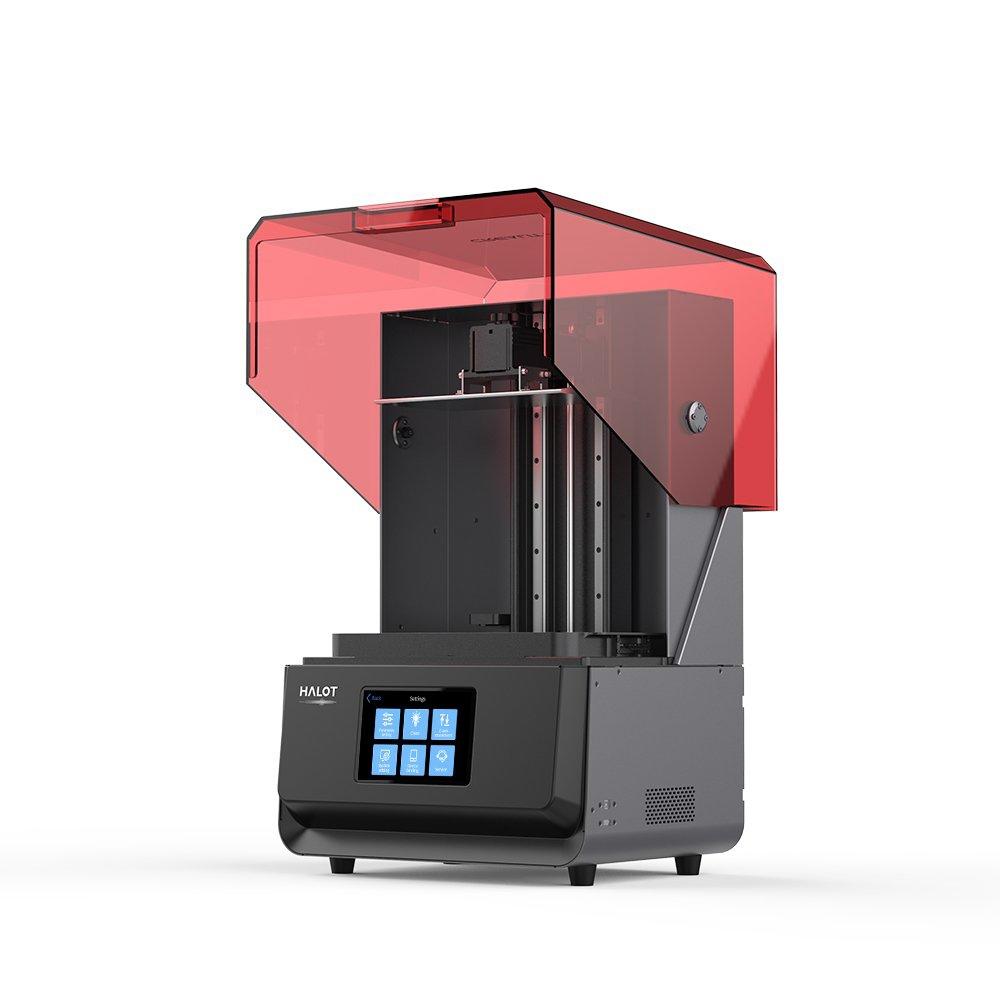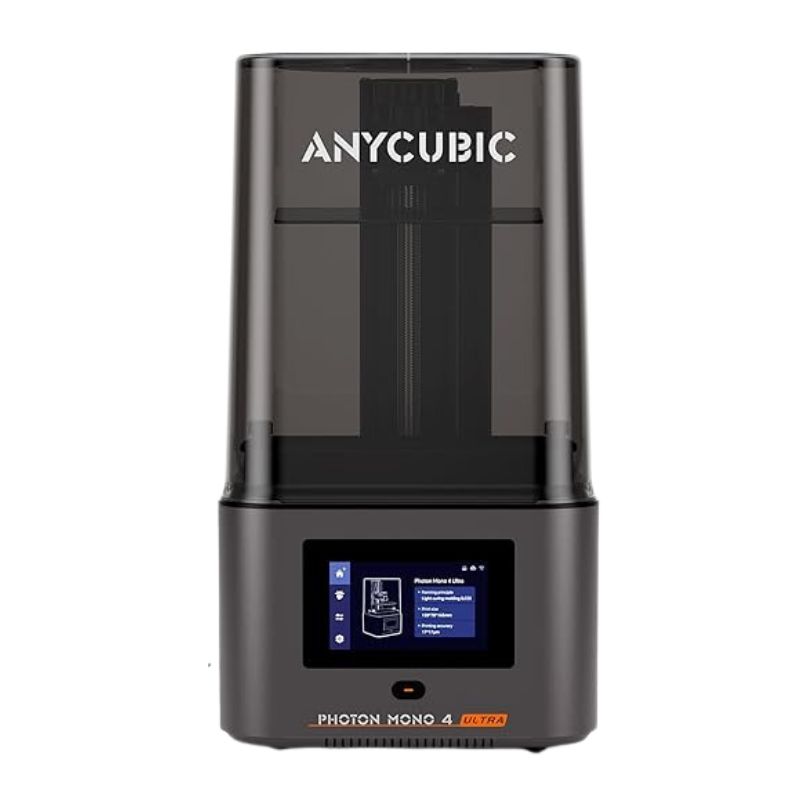Compare Halot Max vs Photo Mono 4 Ultra
Comparison between the best 3D printers
Choose the best 3D printer at the best price. The cheapest 3D printers are here.
Buy a 3D printer here with 3D Fila.
 |
 |
|
| Model | Halot Max[BUY Halot Max] |
Photo Mono 4 Ultra[BUY Photo Mono 4 Ultra] |
| Printing Material | Resin | Resin |
| Buy Resin for Creality 3D Halot Max | Buy Resin forAnycubic Photo Mono 4 Ultra | |
| Estimated price | $3000,00 | $250,00 |
| Manufacturer | Creality 3D | Anycubic |
| Release Year | 2021 | 2024 |
| Print Volume [mm] | 293x165x300 | 153x87x165 |
| Printer Size [mm] | 480x387x770 | 231x236x430 |
| Weight [kg] | 32,5 | 5 |
| Power Loss Recovery | NO | NO |
| Technology | LCD | LCD |
| Screen Resolution | 4k | 10k |
| Max Print Speed [s/layer] | 1 | 1 |
| Maximum Resolution [mm] | 0,03 | 0,01 |
| Processor | ||
| Display | Display touchscreen 5'' | Touchscreen 4.3'' |
| Power Supply | ||
| Connectivity | SD / USB / Wi-Fi | USB |
| Operating systems | Windows, Mac, Linux | Windows, Mac |
| Date of registration in the system | 2022-11-04 | 2024-12-13 |
| Release date | 2021 | 2024 |
| Extra features | The Halot Max printer stands out for its large print size (293 x 165 x 300 mm) and uses SLA technology. It has an integral light source for improved accuracy and a strong core with an advanced operating system. Its Z-axis module ensures high precision, supported by efficient slicing software. The machine offers online OTA updates and boasts an adjustable layer thickness between 10 and 200 microns. Its XY-axis resolution is 3840*2160, with 0.05 mm accuracy, and an integral 405nm light source. The printer includes a 5" touchscreen and multiple connectivity options, such as USB, Creality Cloud, and HALOT BOX WiFi. With cutting-edge technology, the Halot Max is ideal for printing small models with uniform precision, thanks to its self-developed lighting system and stable printing mechanism, which includes dual linear guides, ball screws, and an intelligent brake system. | The Anycubic Photon Mono 4 Ultra features 10K resolution (9024x5120) with 17x17um pixels and high light uniformity (>=90%) enabled by the COB system with Fresnel lens and uniformity algorithm. It offers a build volume of 153.4x87x165 mm and speeds up to 120 mm/h with high-performance resin. It includes assisted leveling, built-in Wi-Fi, and a redesigned platform for better adhesion and easy model removal. Additionally, it has a print resumption function after power outages, optimizing time and materials. |
| Support for multiple colors and materials (AMS and CFS) | NO | NO |
Notes * |
||
| Cost-benefit | 5 / 10 | 8 / 10 |
| Hardware | 1.2 / 10 | 6.3 / 10 |
| Tela | . | . |
| Print volume | 3 / 10 | 3 / 10 |
| Performance | 9 / 10 | 9 / 10 |
| [BUY Halot Max] | [BUY Photo Mono 4 Ultra] |
Conclusion |
| In comparing the Halot Max and the Anycubic Photo Mono 4 Ultra, it is evident that both printers cater to different needs and budgets in the realm of 3D printing. The Halot Max, with its sizable print volume and advanced features such as a 5-inch touchscreen and an integral lighting system, is positioned as a more professional option that excels in print accuracy and quality. However, this comes at a significantly higher price point, which may deter hobbyists or those with limited budgets who prioritize affordability. On the other hand, the Anycubic Photo Mono 4 Ultra presents an enticing choice for budget-conscious consumers, boasting impressive 10K resolution, higher print speeds, and features like power loss recovery, which enhance its usability. Its compact size and lower weight make it easier to fit into smaller spaces, appealing further to hobbyists and entry-level users. Ultimately, the decision between these two models hinges on the user’s specific needs and financial considerations. The Halot Max offers superior print capacity and advanced technology for professionals aiming for high-quality results, while the Photo Mono 4 Ultra provides an excellent balance of features and performance for those looking for a more economical yet capable option. Each printer excels within its context, showcasing the diversity and options available in the current 3D printing market. |

